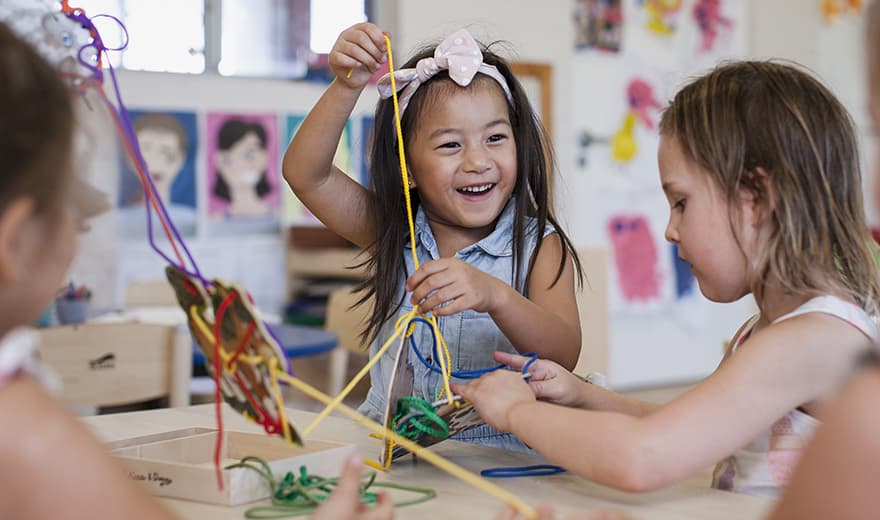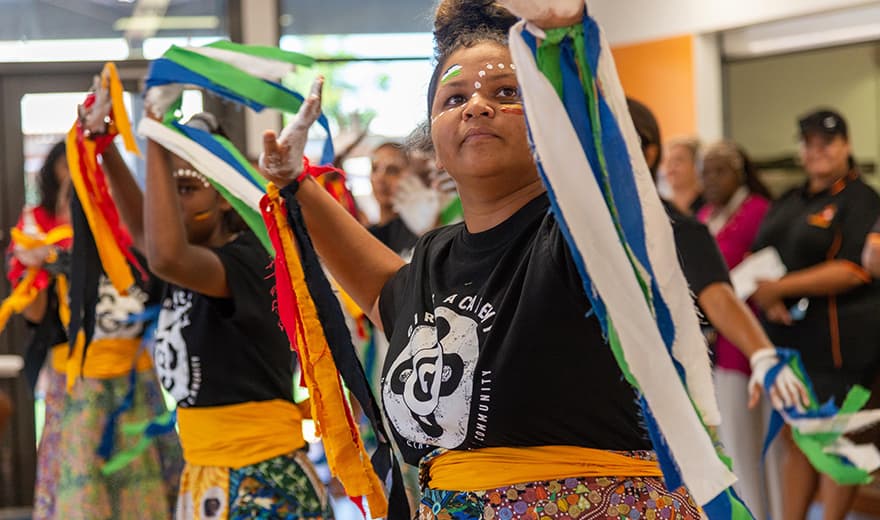You don't have to be an early learning educator to introduce child-led learning at home.
The kind of toys and activities you have in your home is usually dictated by your child, either matching their developmental stage (i.e. first building blocks vs. LEGO) or because they have shown a particular interest in something (i.e. dolls or trucks).
What’s great about child-led learning is that you don’t need to go out and buy new things to initiate it, you simply need to recognise when your child is interested in something (look for the cues) and then gently scaffold their learning while keeping it fun.
Any opportunity can be used as a learning experience.
Next time you’re out and about with your child, pay attention to what grabs their interest. It could be a certain food in the supermarket- maybe you could count the objects as you put them in the trolley, use the scales and weigh it- introducing early maths skills, this could lead to you trying out a new recipe together, and hypothesising about what happens, teaching them about liquid and solid forms.
You could find a leaf in the park which could lead to collecting different leaves and feeling and labelling the texture “that’s a rough leaf, this one is a smooth leaf”. Depending on your child’s age it could lead to a discussion about nature, trees and the benefit they have to us, what we use trees for. this could lead to more important topics like being environmentally responsible and sustainable.
Another way to encourage child-led learning is ‘using the environment as a third teacher’. This involves creating an ‘environment’ for your child to explore, then letting them explore it in their own way and at their own pace. At home, this might involve setting up a scene (environment) for your child to explore, then letting them discover it when they are interested and ready.
This can be particularly useful for parents who are concerned about specific developmental skills and want to create opportunities for their child to work on these skills (i.e. setting up activities involving pencils for children with poor fine motor skills).
The challenging part is knowing when to join in or assist your child, and when to sit back and leave them to it.
“Many parents feel the need to join in when their children are playing, particularly when they are playing alone, like an only child,” MercyCare Manager of Early Learning Services, Rosina Smith said.
“Although they mean well, at times when parents join in with their child’s play, or “try to help”, they may actually be stopping a good opportunity for self-learning. Their involvement instantly changes the direction of the play and can disrupt the child’s natural flow and curiosity.
“Sometimes the best thing you can do as a parent is just sit back and watch, so you don’t interrupt the learning process that’s happening. An important way children learn is from exploration and trial and error” Rosina said.
“That’s not to say you shouldn’t play with your children – you absolutely should – but try to be a little more mindful of giving them the lead, while also providing them the time and opportunity to figure it out themselves ”
Learn more about MercyCare’s approach to early childhood education here.




